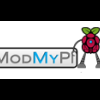- Robot Maker
- → Affichage d'un profil : Messages: Guillaume TDRIS
Guillaume TDRIS
Inscrit(e) (le) 27 mai 2010Déconnecté Dernière activité oct. 18 2011 06:04





Statistiques de la communauté
- Groupe Membres
- Messages 49
- Visites sur le profil 9 945
- Titre Nouveau membre
- Âge 40 ans
- Date de naissance Mars 20, 1985
-
Gender
 Homme
Homme
-
Location
Saint Soupplet
-
Interests
Robotique
Électronique
Outils utilisateur
Derniers visiteurs
Messages que j'ai postés
Dans le sujet : Construction d'un robot suiveur de lignes
08 mai 2011 - 12:52
Le 7805 n'est pas un transistor comme indiqué sur la photo, mais un régulateur de tension 7 à 36V en entré pour 5V en sortie (1A max).
La j'ai pas le temps je prépare ma semaine. Dès que je dégage quelque minute je te fait un petit schéma de principe avec tes composants...
Dans le sujet : Mon 1er robot
08 mai 2011 - 12:42
Bravo pour ton robot, belle petite bête ^^.
J'ai l'impression que tu n'as pas la possibilité de déduire un réel positionnement avec ta méthode.
A chaque passage sur une ligne, -il la compte X=X+1
en marche arrière X=X-1
Jusque-là très simple
Mais cela se complique lors des traversées en diagonale.
Alors vous comment feriez-vous ?
Car il est certainement possible que le robot sache ou il se trouve en utilisant ces lignes noirs non ?
Ton robot peut seulement savoir combien de ligne il a traversé, mais il ne peut absolument pas savoir dans quelle direction! il te faudrait un troisième capteurs au moins pour détecter si tu franchis une ligne ou un croisement. Personnellement j'avais tenté un expérience semblable avec plusieurs lignes qui se croisent, j'ai du mettre 8 capteurs pou avoir quelque chose d'exploitable (élimination plus facile des parasites, cartographie des lignes avec images des capteurs et l'odométrie des roues en complément...)
Avec seulement 2 capteurs pour moi, c'est pas évident.
Dans le sujet : I2c? MPLAB? Comment ça marche..
08 mai 2011 - 12:27
Voila le .c
#include <p18F4550.h>
#include "i2c.h"
#include "LCD_I2C.h"
#include "delays.h"
#define vitesse_I2C 400000 // I2C a 100Khz (pas touche...)
#define FOSC 48000000 // microcontroleur à 48 Mhz
#define v (FOSC/4*vitesse_I2C)-1
//-------------------------------------------------------------------------------------------------------------------------
// Définition et initialisation des variables de type structuré "I2C_CONTROL"
I2C_CONTROL GYRO_EEPROM = {Gyro_EEaddr, Gyro_EEaddr<<1, (Gyro_EEaddr<<1)|1 };
I2C_CONTROL GYRO_MG1101 = {Gyro_MG1101addr, Gyro_MG1101addr<<1, (Gyro_MG1101addr<<1)|1 };
void Init_I2C(void)
{
SSPSTAT &= 0x3F; // power on state
SSPCON1 = 0x00; // power on state
SSPCON2 = 0x00; // power on state
SSPCON1 |= SLAVE_7; // select serial mode
SSPSTAT |= 0; // slew rate on/off
DDRBbits.RB1 = 1; // Set SCL (PORTB,1) pin to input
DDRBbits.RB0 = 1; // Set SDA (PORTB,0) pin to input
SSPCON1 |= SSPENB; // enable synchronous serial port
SSPADD = 0x20<<1; // slave address
SSPCON1bits.CKP = 1; // no clock
PIE1bits.SSPIE = 1; // autorisation de l'interruption de l'i2c
IPR1bits.SSPIP = 0; // I2C en basse priorité
PIR1bits.SSPIF = 0; // on déactive le bit SSPIF pour permettre a l'interruption d'avoir lieu
}
/*********************************************************************/
#undef StartI2C
void StartI2C( void )
{
SSPCON2bits.SEN = 1; // initiate bus start condition
}
/*******************************************************************/
#undef IdleI2C
void IdleI2C( void )
{
while ( ( SSPCON2 & 0x1F ) | ( SSPSTATbits.R_W ) )
continue;
}
/*******************************************************************/
signed char putsI2C( unsigned char *wrptr )
{
while ( *wrptr ) // transmit data until null character
{
if ( SSPCON1bits.SSPM3 ) // if Master transmitter then execute the following
{
if ( putcI2C ( *wrptr ) ) // write 1 byte
{
return ( -3 ); // return with write collision error
}
IdleI2C(); // test for idle condition
if ( SSPCON2bits.ACKSTAT ) // test received ack bit state
{
return ( -2 ); // bus device responded with NOT ACK
} // terminate putsI2C() function
}
else // else Slave transmitter
{
PIR1bits.SSPIF = 0; // reset SSPIF bit
SSPBUF = *wrptr; // load SSPBUF with new data
SSPCON1bits.CKP = 1; // release clock line
while ( !PIR1bits.SSPIF ); // wait until ninth clock pulse received
if ( ( !SSPSTATbits.R_W ) && ( !SSPSTATbits.BF ) )// if R/W=0 and BF=0, NOT ACK was received
{
return ( -2 ); // terminate PutsI2C() function
}
}
wrptr ++; // increment pointer
} // continue data writes until null character
return ( 0 );
}
/*******************************************************************/
unsigned char ReadI2C( void )
{
SSPCON2bits.RCEN = 1; // enable master for 1 byte reception
while ( !SSPSTATbits.BF ); // wait until byte received
return ( SSPBUF ); // return with read byte
}
/*******************************************************************/
#undef StopI2C
void StopI2C( void )
{
SSPCON2bits.PEN = 1; // initiate bus stop condition
}
/*******************************************************************/
#undef AckI2C
void AckI2C( void )
{
SSPCON2bits.ACKDT = 0; // set acknowledge bit state for ACK
SSPCON2bits.ACKEN = 1; // initiate bus acknowledge sequence
}
//////////////////////////////////
unsigned char TestAck()
{
if ( !SSPCON2bits.ACKSTAT ) // test la condition ACK=0
return I2C_SUCCESS; // retourne avec pas d'erreur sur le bit acknowledge ACKSTAT
else
return I2C_ERROR; // retourne avec erreur sur le bit acknowledge ACKSTAT
}
/*******************************************************************/
unsigned char WriteI2C( unsigned char data_out )
{
SSPBUF = data_out; // write single byte to SSPBUF
if ( SSPCON1bits.WCOL ) // test if write collision occurred
return ( -1 ); // if WCOL bit is set return negative #
else
{
while( SSPSTATbits.BF ); // wait until write cycle is complete
return ( 0 ); // if WCOL bit is not set return non-negative #
}
}
char EMByteWrite( unsigned char *pTxData, unsigned short Length )
{
int ii;
IdleI2C(); // ensure module is idle
StartI2C(); // initiate START condition
while ( SSPCON2bits.SEN ); // wait until start condition is over
if ( PIR2bits.BCLIF ) // test for bus collision
{
return ( -1 ); // return with Bus Collision error
}
else // start condition successful
{
if ( WriteI2C( *pTxData ) ) // write byte - R/W bit should be 0
{
return ( -3 ); // set error for write collision
}
pTxData++;
for( ii = 1; ii<Length; ii++ )
{
IdleI2C(); // ensure module is idle
if ( !SSPCON2bits.ACKSTAT ) // test for ACK condition received
{
// PORTB|=0b00001100;
if ( WriteI2C( *pTxData ) ) // write word address for EEPROM
{
// PORTB&=0b11111011;
return ( -3 ); // set error for write collision
}
pTxData++;
}
else
{
// PORTB|=0b00000001;
return ( -2 ); // return with Not Ack error condition
ii=Length;
}
}
IdleI2C(); // ensure module is idle
StopI2C(); // send STOP condition
while ( SSPCON2bits.PEN ); // wait until stop condition is over
if ( PIR2bits.BCLIF ) // test for bus collision
{
return ( -1 ); // return with Bus Collision error
}
return ( 0 ); // return with no error
}
}
unsigned char PageRead( unsigned char control, unsigned char address, unsigned char *rdptr, unsigned char length )
{
unsigned char status;
IdleI2C(); // ensure module is idle
StartI2C(); // initiate START condition
while ( SSPCON2bits.SEN ); // wait until start condition is over
WriteI2C( control<<1 ); // write 1 byte
IdleI2C();
status = TestAck(); // ensure module is idle
if( status == I2C_SUCCESS )
{
WriteI2C( address ); //The register memory address (used to address the 16 bytes in MG1101 RAM)
// is internally incremented following the receipt of each data word.
IdleI2C();
status = TestAck();
if( status == I2C_SUCCESS )
{
RestartI2C(); // generate I2C bus restart condition
while ( SSPCON2bits.RSEN ); // wait until re-start condition is over
WriteI2C( (control<<1) | 1 );// WRITE 1 byte - R/W bit should be 1 for read
IdleI2C();
status = TestAck();
if( status == I2C_SUCCESS )
{
while ( length )
{
*rdptr++ = ReadI2C(); // save byte received
length--;
if(length)
AckI2C();
else
NotAckI2C();
while ( SSPCON2bits.ACKEN ); // wait until ACK sequence is over
}
StopI2C(); // send STOP condition
while ( SSPCON2bits.PEN );// wait until stop condition is over
}
}
}
return status;
}
unsigned char PageWrite( unsigned char control, unsigned char address, unsigned char *pData, unsigned char length ) //EEPageWrite
{
unsigned char addr=0, status;
IdleI2C(); // ensure module is idle
StartI2C(); // initiate START condition
while ( SSPCON2bits.SEN ); // wait until start condition is over
WriteI2C( control ); // write 1 byte
IdleI2C();
status = TestAck(); // ensure module is idle
if( status == I2C_SUCCESS )
{
WriteI2C( address ); //The register memory address (used to address the 16 bytes in MG1101 RAM)
// is internally incremented following the receipt of each data word.
IdleI2C();
status = TestAck();
}
while( (status == I2C_SUCCESS) && (addr<length) ) // test for ACK condition, if received
{
WriteI2C( *pData++ );
IdleI2C();
status = TestAck();
addr++;
}
StopI2C(); // réalise une condition de stop sur le bus I2C
while( SSPCON2bits.PEN );
Delay10KTCYx(5); // temps d'attente de 50ms
return status;
}
unsigned char ByteWrite( unsigned char control, unsigned char address, unsigned char data )
{
unsigned char status;
IdleI2C(); // ensure module is idle
StartI2C(); // initiate START condition
while ( SSPCON2bits.SEN ); // wait until start condition is over
WriteI2C( control );
IdleI2C();
status = TestAck(); // ensure module is idle
if( status == I2C_SUCCESS )
{
WriteI2C( address ); //The register memory address (used to address the 16 bytes in MG1101 RAM)
// is internally incremented following the receipt of each data word.
IdleI2C();
status = TestAck();
if( status == I2C_SUCCESS )
{
WriteI2C( data );
IdleI2C();
status = TestAck();
}
}
StopI2C(); // send STOP condition
while ( SSPCON2bits.PEN ); // wait until stop condition is over
Delay10KTCYx(5); // temps d'attente de 50ms
return status;
}
unsigned char ByteRead( unsigned char control, unsigned char address )
{
unsigned char status, data;
IdleI2C(); // ensure module is idle
StartI2C(); // initiate START condition
while ( SSPCON2bits.SEN ); // wait until start condition is over
WriteI2C( control<<1 );
IdleI2C();
status = TestAck(); // ensure module is idle
if( status == I2C_SUCCESS )
{
WriteI2C( address ); //The register memory address (used to address the 16 bytes in MG1101 RAM)
// is internally incremented following the receipt of each data word.
IdleI2C();
status = TestAck();
if( status == I2C_SUCCESS )
{
RestartI2C(); // generate I2C bus restart condition
while ( SSPCON2bits.RSEN );// wait until re-start condition
WriteI2C( (control<<1) | 1 );
IdleI2C();
status = TestAck();
if( status == I2C_SUCCESS )
{
data = ReadI2C(); // enable master for 1 byte reception
NotAckI2C(); // send ACK condition
while ( SSPCON2bits.ACKEN ); // wait until ACK sequence is over
}
}
}
StopI2C(); // send STOP condition
while ( SSPCON2bits.PEN ); // wait until stop condit
return ( data );
}
Et voila le .h associé
/* PIC18 I2C peripheral library header */
/* SSPCON1 REGISTER */
#define SSPENB 0x20 /* Enable serial port and configures
SCK, SDO, SDI */
#define SLAVE_7 6 /* I2C Slave mode, 7-bit address */
#define SLAVE_10 7 /* I2C Slave mode, 10-bit address */
#define MASTER 8 /* I2C Master mode */
/* SSPSTAT REGISTER */
#define SLEW_OFF 0xC0 /* Slew rate disabled for 100kHz mode */
#define SLEW_ON 0x00 /* Slew rate enabled for 400kHz mode */
//-------------------------------------------------------------------------------------------------------------------------
// Modèle de structure de control I2C
typedef struct
{
unsigned char addr;
unsigned char write;
unsigned char read;
}I2C_CONTROL;
//-------------------------------------------------------------------------------------------------------------------------
// Variables de type structuré importées du fichier "i2c.c"
extern I2C_CONTROL GYRO_EEPROM;
extern I2C_CONTROL GYRO_MG1101;
//-------------------------------------------------------------------------------------------------------------------------
// Adresse des modules I2C
#define Gyro_EEaddr 0b1010000
#define Gyro_MG1101addr 0b1010111
//-------------------------------------------------------------------------------------------------------------------------
// I2C bus states
#define I2C_SUCCESS 1
#define I2C_ERROR 0
#define StopI2C() SSPCON2bits.PEN=1
#define StartI2C() SSPCON2bits.SEN=1
#define RestartI2C() SSPCON2bits.RSEN=1
#define NotAckI2C() SSPCON2bits.ACKDT=1, SSPCON2bits.ACKEN=1
#define AckI2C() SSPCON2bits.ACKDT=0, SSPCON2bits.ACKEN=1
#define IdleI2C() while ((SSPCON2 & 0x1F) | (SSPSTATbits.R_W))
#define CloseI2C() SSPCON1 &=0xDF
#define DataRdyI2C() (SSPSTATbits.BF)
#define getcI2C ReadI2C
#define putcI2C WriteI2C
void Init_I2C(void);
unsigned char WriteI2C( unsigned char data_out );
unsigned char ReadI2C( void );
unsigned char TestAck( void );
unsigned char ByteWrite( unsigned char control, unsigned char address, unsigned char data );
unsigned char ByteRead( unsigned char control, unsigned char address );
unsigned char PageWrite( unsigned char control, unsigned char address, unsigned char *pData, unsigned char length );
unsigned char PageRead( unsigned char control, unsigned char address, unsigned char *rdptr, unsigned char length );
Ça date méchamment... De mémoire ce protocole est assez pénible à faire marcher. Regarde au moins la méthode d'initialisation celle la elle fonctionne c'est sur.
Dans le sujet : Construction d'un robot suiveur de lignes
06 mai 2011 - 12:39
si il y a moins cher , ou est ce que je les trouves ?( on m a conseille aussi un PIC 18F1220 que j ai vu a 4.60 euro , pense tu que j en ai besoin??)
Après réflexion et vu tes délais tu n'auras pas la possibilité d'utiliser un microcontroleur avec un programme à construire. Je rejoins donc Yves et je te conseille d'utiliser un simple circuit logique, qui possède lui des fonctions de base simples (Et logique, OU logique...) qui conviendrons parfaitement à ton projet.
A ta disposition pour la suite...
Dans le sujet : PIC interface USB, encodeur en quadrature, PWM
05 mai 2011 - 04:40
Tu peux avoir C18 gratuitement (version étudiante), a condition de t'inscrire sur microchip.com
- Robot Maker
- → Affichage d'un profil : Messages: Guillaume TDRIS
- Privacy Policy


 Mon contenu
Mon contenu







